The Bank of England (BoE) is facing an ongoing battle against inflation. Despite interest rates having been aggressively hiked to 4.50% as headline inflation reached double digits, there is more work to be done. Today’s announcement of inflation for April suggests that the work could be considerable. The likely need for further rate hikes (yes, plural) in the meetings to come is driving GBP strength across its major currency crosses.
- Hot UK inflation data driven by services inflation
- A headache for the Bank of England
- A GBP rally is driving EUR/GBP down towards a key support band
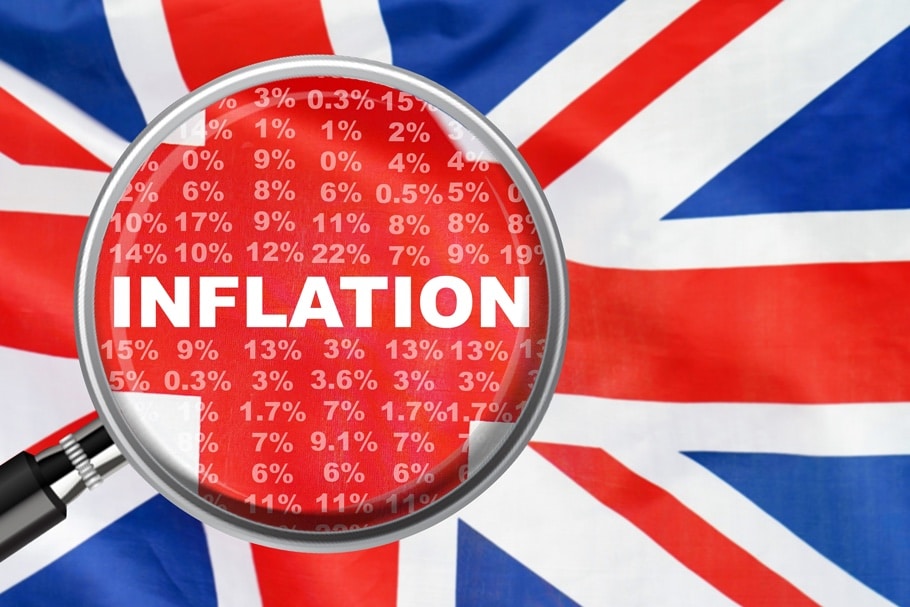
UK inflation comes in hotter than expected
UK inflation is not coming down anywhere near fast enough. According to the UK’s Office for National Statistics, headline inflation is now falling, but not as fast as analysts had been expecting. Remarkably, core inflation has increased. This is certainly not how it was meant to be for the Bank of England after an aggressive series of rate hikes took the Base Rate to 4.50%.
Today’s inflation data for April shows both headline CPI and core CPI both higher than forecast.
- UK headline CPI dropped to 8.7% (from 10.1%). That sounds good, but the reduction is due to last April’s 50% increase in energy costs being removed from the data. But also, when you consider markets were expecting a decline to 8.2%, this is a sizable upside surprise.
- UK core CPI saw a sharp increase to 6.8% (up from 6.2%). This is a significant shock considering that markets had been positioned for core inflation to be flat or even drop slightly.
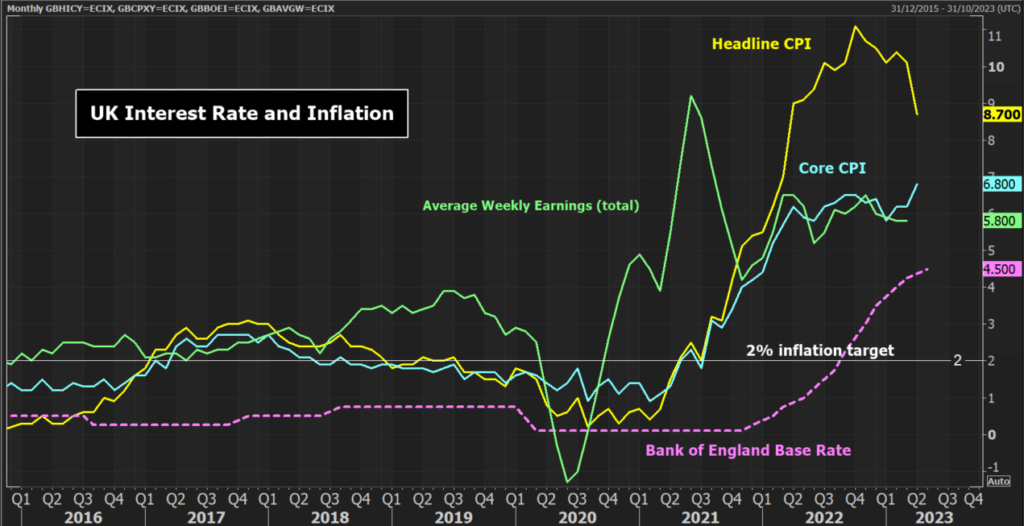
The main driver of the upside surprises continues to be the hot run in services inflation, with an eye-watering increase in food inflation still around 19% year on year. Services inflation increased to 6.9% from 6.6%.
Now, having said all that, there is a sliver of encouraging news in the data. The PPI inflation rates are falling far more sharply. With input (raw materials) and output (factory-gate prices) falling more quickly, this should feed through into some more considerable declines in the CPI numbers as the year progresses. Or at least, this is what analysts are expecting/hoping. However, the considerable upside surprises in today’s CPI data may cause a few of them to be more nervous about their expectations of the pace of the reduction.
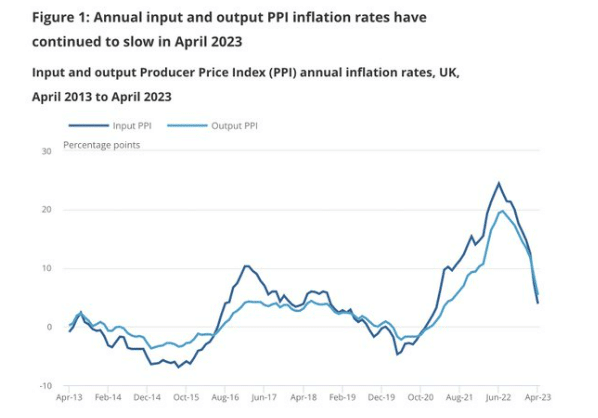
The big headache for the Bank of England
This inflation data will reverberate down the corridors of the Bank of England. Inflation is proving to be very sticky. BoE Governor Bailey was speaking yesterday and kept his cards close to his chest. In the latest BoE decision at the beginning of May, markets were looking for peak rates to be around 5.00%. Bailey suggested that this was enough to get a grasp on inflation.
However, markets have been pushing on and in the wake of this inflation surprise today there is pricing upwards towards three more hikes.
This certainly points towards another 25 basis points (to 4.75%) on 22nd June and a peak of at least 5.00%. However, there is another inflation release before then which could once more change the picture.
GBP is rallying against major currencies
For now, in forex, we are seeing GBP strengthening once more. It has continued to be one of the better-performing major currencies in the face of a USD rebound in recent weeks.
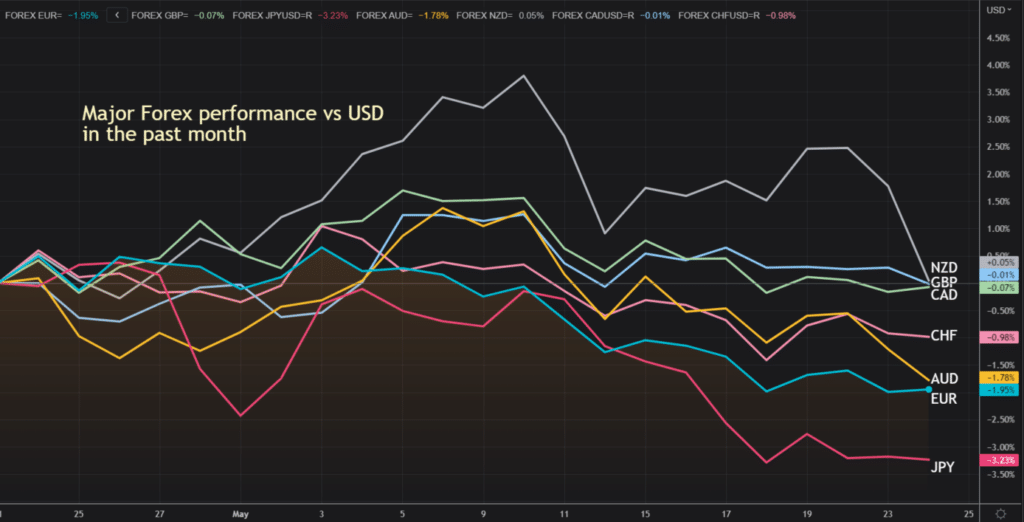
The sharp decline in NZD has come after the Reserve Bank of New Zealand’s dovish hike of 25bps, where it signalled that it was now likely done with its tightening. This is weighing on the AUD which seems to also be down in sympathy. The weakness in EUR and JPY also continues.
EUR/GBP continues lower
This relatively strong performance of GBP against major currencies is translating well for GBP crosses today. A sharp pick up in GBP/NZD is the eye-catching move, along with gains on GBP/AUD too.
However, the key move that this inflation data helps to push is the downside on EUR/GBP. Technical analysis of the pair shows that since breaking below the support band of 0.8716/0.8758 which had been a floor throughout the first few months of the year, there is a growing negative outlook. A move towards a test of the key Q4 2022 support band 0.8545/0.8565 looks increasingly likely now.
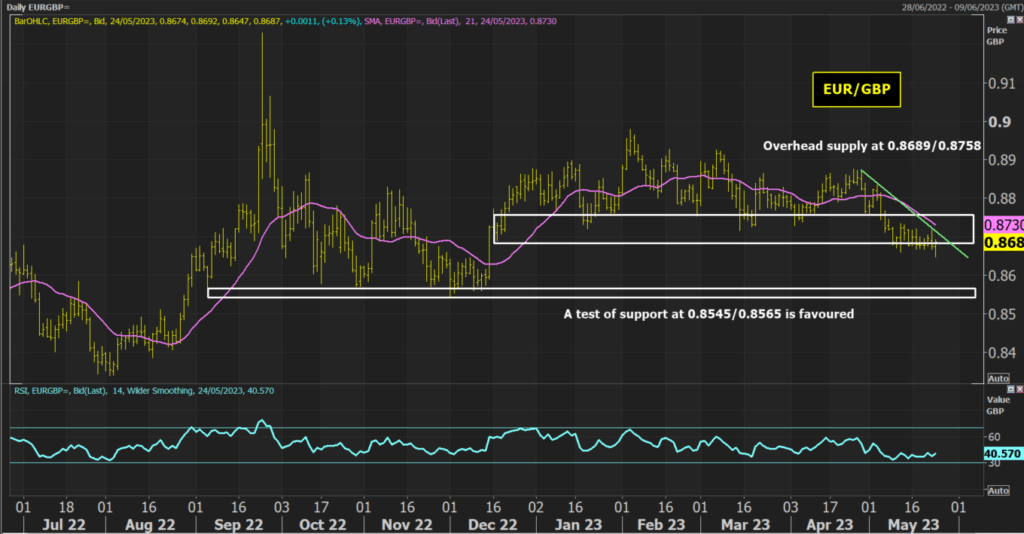
This negative outlook is reflected in the growing four-week downtrend, falling 21-day moving average and the daily Relative Strength Index which is consistently under 50. This all points towards selling into strength on the EUR/GBP pair.